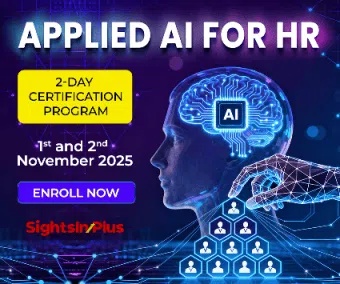For decades, succession planning has served as a roadmap for ensuring human leadership continuity: identifying talent, preparing incumbents, and ensuring institutional memory survives turnover.
Today, that roadmap must be rewritten. Artificial intelligence, software agents, and robotic process automation are not just productivity tools — they are mission-critical assets that change who does work, how work is designed, and what “readiness” looks like.
HR must therefore expand succession and career development from focusing solely on people to a hybrid strategy that encompasses people, AI assets, and the human capabilities required to orchestrate them.
Why this matters now, recent industry research shows rapid adoption of generative and agentic AI across organizations, with a large share of roles and tasks evolving as a result.
At the same time, macro shifts in job creation and skill demand mean leaders who ignore technology’s lifecycle risk, operational gaps, and brittle talent pipelines. Designing succession for the era ahead, therefore, requires HRs to think in three dimensions with its lifecycle:
- People
- Skill-based mobility
- AI as an institutional asset
What “succession for robots” means. It’s not about giving robots titles; it’s about formalizing responsibility, capability transfer, maintenance, and replacement for AI/automation that perform enduring, business-critical functions.
That means tracking ownership of model versions, documenting the skills required to supervise or tune agents, and mapping fallback human roles when automation needs to be retired or remediated. Succession becomes a dual track — preparing people to replace others and preparing people to succeed with or oversee AI.
Design principles for HRs
- Shift to skills and outcomes, not job titles– Succession needs a skills taxonomy that maps human capabilities to tasks and to the AI agents performing them. This skills-first view makes internal mobility and readiness measurable even when job descriptions are fragmented. Organizations using skills architectures and skills inference are already seeing broader internal matches and faster redeployments.
- Treat AI as an asset with a lifecycle– Lifecycle governance—who owns model updates, who validates outputs, who is accountable for ethical behaviors—should sit alongside your succession registry. When an AI capability reaches end-of-life or needs retraining, the HR plan should specify the human roles who will step in, the training required, and the time to readiness. This reduces operational risk when an agent fails or regulatory demands change.
- Build an AI-aware internal talent marketplace– Talent marketplaces powered by AI can accelerate internal reallocation and uncover hidden skills — turning succession from a static bench to a dynamic talent flow. Case studies show such approaches increase internal redeployment and reduce time-to-staff for critical roles. Embed career pathways that combine digital credentials, micro-learning, and on-the-job projects that prepare people to work with specific agent types.
- Reimagine leader readiness for hybrid teams– Future leaders must be able to architect human+AI workflows, make trade-off decisions about automation, and coach teams whose output mixes human judgment and machine recommendations. Include these competencies in assessment centers, development rotations, and performance measures.
- Invest heavily in reskilling and continuous learning– Even optimistic scenarios predict significant shifts in tasks and new roles emerging. A proactive, employer-led reskilling strategy that ties learning to internal mobility reduces layoff risk and keeps succession pools healthy. Prioritize digital literacy, data fluency, and AI oversight skills for successors to critical roles,
- Design governance, ethics, and transparency into plans– Succession that involves AI must be auditable: which agent version handled a business process, who validated it, and who is responsible for human escalation. This serves as both a risk control measure and a signal to employees that decisions regarding automation are accountable and reversible.
A practical HR playbook for effective transition:
- Map critical processes to the human and AI agents that execute them.
- Expand your succession inventory to capture “AI dependency” and the human competencies for oversight.
- Pilot an AI-enabled talent marketplace for two critical functions and measure time-to-staff and redeployment rates.
- Define owner and escalation paths for each AI capability (ops, legal, HR).
- Build micro-learning pathways for AI-oversight skills and link course completion to readiness status.
- Add AI oversight and hybrid leadership to your leader assessment and development programs.
Succession planning has always focused on reducing uncertainty. The emergence of agentic AI introduces new uncertainties — but also new opportunities.
HR leaders who act quickly to treat AI as a governed, auditable asset while enhancing skills-based internal mobility will not only safeguard continuity but also build a resilient talent engine that views people and technology as a combined workforce.
In a world where robots won’t carry a corporate ID card, they will still require a plan — and those plans must be driven by humans.
Reference: Deloitte, Degreed, DevSkiller, Workday Forms, DevSkiller, BrianHeger.com, Reuters, World Economic Forum Reports.
Note: We are also on WhatsApp, LinkedIn, and YouTube to get the latest news updates. Subscribe to our Channels. WhatsApp– Click Here, YouTube – Click Here, and LinkedIn– Click Here.



